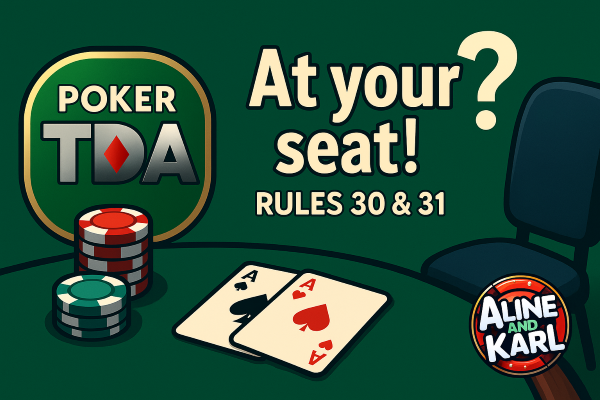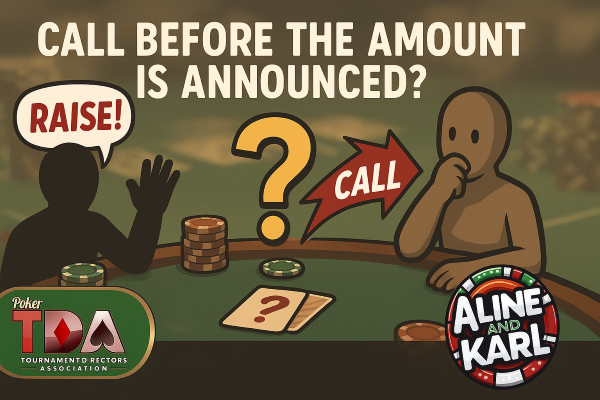Stay at Your Seat: Understanding TDA 2024 Rules 30 & 31
In a poker tournament, discipline is essential to keeping the game running smoothly. Two fundamental rules from the Poker Tournament Directors Association (TDA) govern a player’s presence at the table: Rules 30 and 31. They address two specific scenarios every player should understand.
🎯 Rule 30: Be in Your Seat for a Live Hand
“To have a live hand, players must be in their seat when the last card of the initial deal is dealt.” — Rule 30, TDA 2024
Any player not within reach of their chair at that moment has their hand killed immediately. They may not look at their cards, and their blinds and antes are added to the pot.
However, some venues use a different local rule, requiring players to be in their seat from the first card. While this is not the literal TDA application, it is perfectly acceptable provided the rule is clearly announced to all participants before the tournament begins.
If a player permanently leaves their seat during the deal, the dealer may treat it as a voluntary out-of-turn action. The dealer can then call the Floor, who may impose a penalty under Rule 53 (Premature Action)—except, of course, for the player under the gun.
🪑 Rule 31: Stay at the Table with a Live Hand
“Players with a live hand must remain at the table for all betting rounds and the showdown.” — Rule 31, TDA 2024
Once a player has a live hand—whether they still have chips to act, are all-in, or have finished betting—they are required to stay at the table until the hand is over. This ensures protection of their hand and proper tracking of the action.
Situations do arise where a player stands up briefly, perhaps to greet someone, pay for a drink, or set something down. As long as the player remains in the immediate vicinity of the table and the action is neither slowed nor disrupted, the Floor may use discretion and decide whether intervention is needed. The rule thus leaves necessary latitude for tournament staff to judge each situation.
Remember, only the Floor may apply a penalty, and only after the hand concludes (see Rule 71). The dealer must never kill a live hand, even if the player is momentarily away.
📌 In Summary
- Rule 30: A player must be in their seat when the last card of the initial deal is dealt—unless a local rule requires being seated from the first card.
- Rule 31: A player with a live hand must remain at the table until the hand is finished.
- Local rules are valid if they are clearly communicated in advance.
- The Floor is the final authority on behavior, leeway, and penalties.
- The dealer never kills a live hand.




